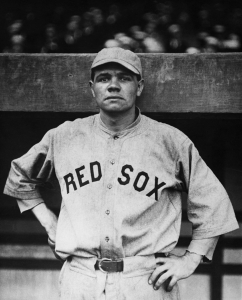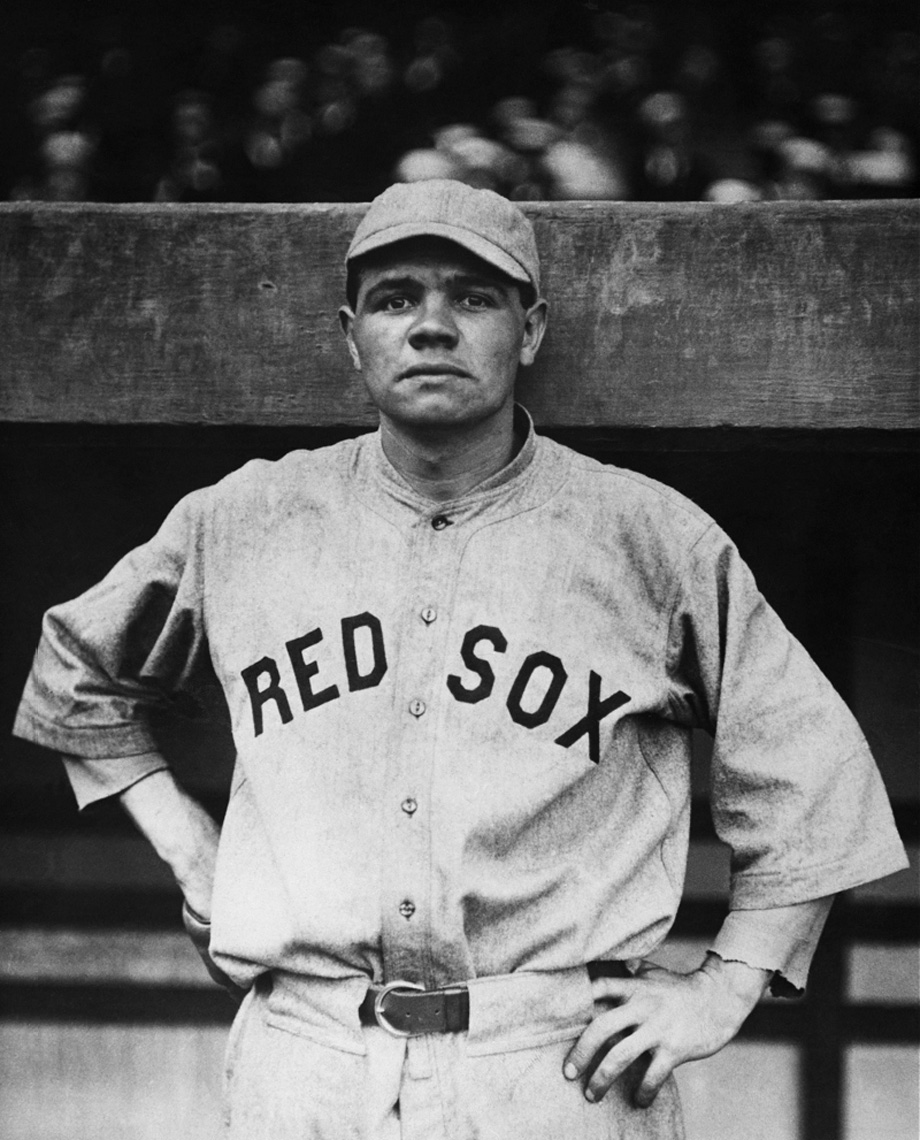July 5, 1919: Athletics prevail over Red Sox despite a pair of home runs by Babe Ruth

When it comes to the home run, Babe Ruth, of course, is a man of many firsts but a personal first for him came on July 5, 1919, at Fenway Park in Boston when The Bambino had the first of what would be 72 multi-home-run games (which as of 2019 was still the major-league record). On that day, Ruth hit a pair of round-trippers in the second game of a doubleheader against the Philadelphia Athletics. Unfortunately for the Red Sox – and The Babe – they came in a losing effort, as Connie Mack’s team won the game, 8-6 in 10 innings, to sweep the twin bill.
In 1919 the Red Sox were coming off what would be their final World Series win of the twentieth century but they struggled to a sixth-place finish with a mark of 66-71. The Athletics were in the midst of a seven-year run of last-place finishes. The victories on this day accounted for two of just 36 wins they would accumulate for the season, against 104 defeats.
One day after Christmas in 1919, the Red Sox gave the New York Yankees a gift by selling Ruth to them, but before he left the Hub, the Babe would have a season for the ages – the first of many – with the bat in his hands. He clubbed 29 homers in 1919 to break the single-season home-run record. The number was one more than the major-league team average as he out-homered 10 of the 15 other teams. He also led the American League in runs, on-base percentage, slugging percentage, and RBIs (although runs batted in were was not yet an official statistic). His slash line was .322/.456/.657 in his first season as a full-time player in the field. He started 111 games (106 in left field and 5 at first base) easily surpassing his starts in 1918 when made 57 in the outfield and 13 at first. He did pitch in 1919, taking the mound 17 times with 15 starts, compiling a 9-5 mark with a 2.97 ERA; he struck out 30 batters while walking 58 in 133⅓ innings. For the remainder of his career, Ruth would toe the rubber just five more times, for a total of 31 innings.
The games on July 5 were played in record-breaking heat. The temperature reached 101 degrees at 2:30 in the afternoon, making it the hottest July 5 on record1 (another mark that still stands). The Athletics won game one, 5-3, by scoring three runs in the ninth inning. Ruth was hitless in five plate appearances but walked twice.
In the second game – a makeup of a May 9 rainout – the Red Sox jumped out to an early lead. With one out in the bottom of the first, Harry Hooper’s double to left knocked in Ossie Vitt, who had reached via a walk. Next, Ruth hit the ball to third baseman Fred Thomas, who tagged out Hooper, but threw wildly to first. The error allowed The Babe to get to second, and he scored from there on a single to center field by Roxy Walters after Stuffy McInnis walked.
Poor defense cost the Red Sox the lead in the sixth as they made three errors that allowed the A’s to plate four runs. However, it did set the stage for eighth-inning heroics by Ruth, who had failed to reach base in his two previous at-bats. With Hooper on first base after walking, The Bambino swatted a liner into the right-field seats. Ruth’s drive was described by Boston Globe writer James C. O’Leary as “screeching,”2 and it tied the score at 4-4.
Some two-out lightning in the ninth put Mack’s squad back on top. Cy Perkins singled, then pitcher Jing Johnson helped himself with a double to right that scored his catcher.
In the Red Sox half of the ninth, Everett Scott got a leadoff single and after Red Shannon bunted him to second, Mike McNally came in to pinch-run. Wally Schang pinch-hit for starting pitcher Bill James and while Schang was at the plate, Johnson threw a wild pitch.
O’Leary wrote that after the ball hit the plate, it climbed the screen and “before it rolled back McNally was over the plate.”3
In the 10th, Boston was undone again by poor fielding. Sad Sam Jones was now on the hill and he retired the first two men he faced but Amos Strunk walked. First baseman George Burns hit a liner to center near the flagpole and Strunk trotted home to give Philadelphia a 6-5 advantage. The Red Sox would have been out of the inning but Shannon made his second error of the game when he threw the ball away on a grounder by Merlin Kopp; Burns scored and Kopp provided additional insurance when he scored on a single by Joe Dugan.
Those extra two runs meant that the two-out solo home run Ruth hit over the scoreboard in left field in the bottom of the inning was basically meaningless as far as the game was concerned as McInnis, the next batter, made the final out.
As for Ruth, it was his ninth homer of the season and the 29th of his career. Johnson gave up both in this game; he was the 20th pitcher to be victimized by The Sultan of Swat and the eighth to allow more than one.
Sources
In addition to the sources cited in the Notes, the author consulted Baseball-reference.com, Retrosheet.org, Baseball-almanac.com, and Weather.gov.
Notes
1 “Break in Torrid Wave Promised,” Boston Globe, July 6, 1919: 16.
2 James C. O’Leary, “Mackmen Fight Way to Double Triumph,” Boston Globe, July 6, 1919: 15.
3 Ibid.
Additional Stats
Philadelphia Athletics 8
Boston Red Sox 6
10 innings
Game 2, DH
Fenway Park
Boston, MA
Box Score + PBP:
Corrections? Additions?
If you can help us improve this game story, contact us.


